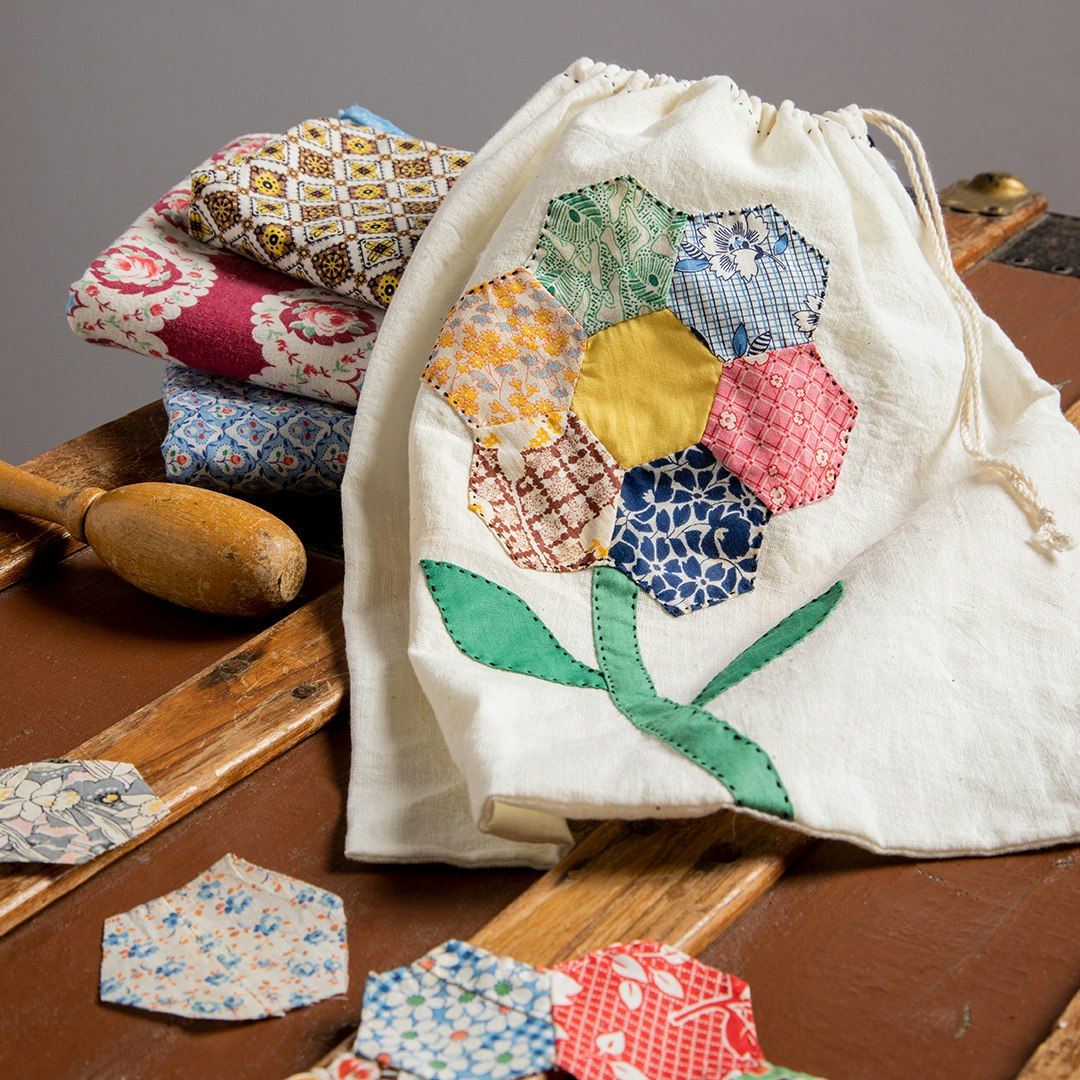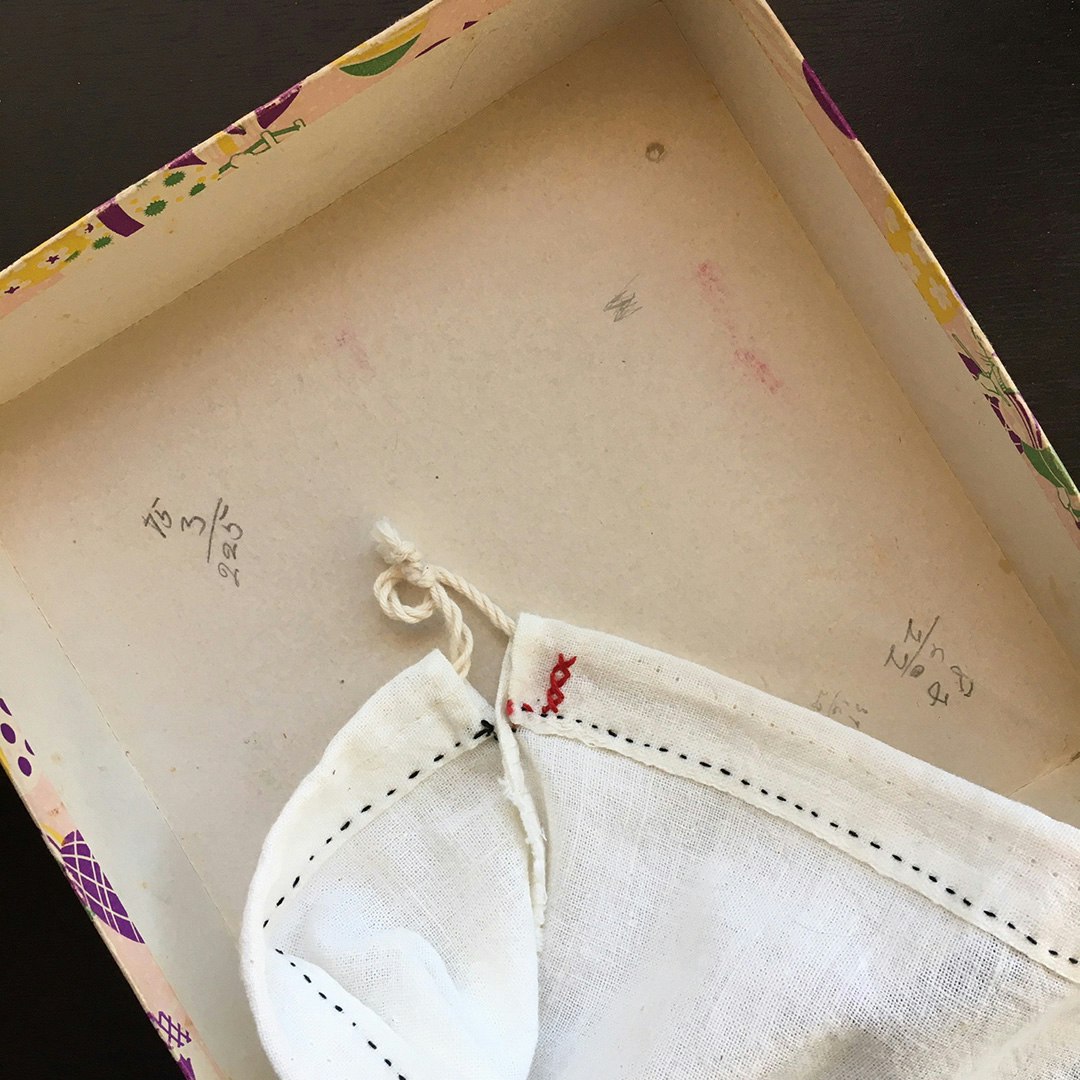I love browsing antique malls and flea markets. Hunting for antique and vintage needlework tools, textiles, and related items to add to my collection is rewarding. I buy my selections for various reasons, but usually, they tug at my heart. Sometimes, I have plans to finish or use portions of them. Often, I study and leave them as they are.
Looking for Clues
We can learn so much from examining these items, which can also lead to many questions. In a small piece of fabric so valued it was pieced—was the seam in this small hexagon from the unworn part of an old garment, or was it pieced from small scraps? Why was a dish towel, made from a flour sack, patched and repaired? It could have been an economic decision or practice for a more important mending project. When browsing through the small textiles, will I find the telltale sign of a feed bag? The perforations left by the chain stitch that closed the feed-bag top provide a clue.
For fiction writing, the theories can inspire all kinds of story lines. For a researcher, it can lead to locating historical economic reports, fiber-content tests, or a homemaker’s journal from the time period. Sometimes, the research branches off, leading to additional research before returning to the main topic.

Fill this sweet drawstring bag with your mending tools, knitting project, or even use it as a gift bag.
A Mending Bag
In the Hexagon-Flower Mending Bag from PieceWork Fall 2020, the hexagon pieces were carefully sorted and stored in an Easter-themed box repurposed as a project box. Inside the lid, someone penciled calculations. Was the previous owner estimating the fabric needed for a quilt or carefully saving fabric for a larger project? We will never know whether she lost interest or didn’t have the resources to gather all the required materials. These are the details that speak to my heart.
I was also intrigued by the three bright, red cross-stitches on the hem edge of the flour-sack dish towel. They are possibly marking stitches. Worked in high-contrast thread to the cream color of the towel, they are obvious and easily seen. Do the three “Xs” stand for the third day of the week, helping a homemaker rotate her kitchen towels? Did she mark all of her linens for laundry? Did she have her mark on the towel for identification purposes when her ladies’ circle helped in the church kitchen? Textile marking has been done for centuries to either count or indicate ownership, and textile marking can be found in ink and embroidery well into the twentieth century.

Markings left by the maker. Photo by Elizabeth Prose
Some mysteries may never be solved. However, by carefully studying the details in every object, we can learn more about the era they came from.
Dawn Cook Ronningen is the author of Antique American Needlework Tools. She lives with her extensive collections of antique needlework tools and textiles in Minnesota and blogs at www.collectorwithaneedle.blogspot.com.

